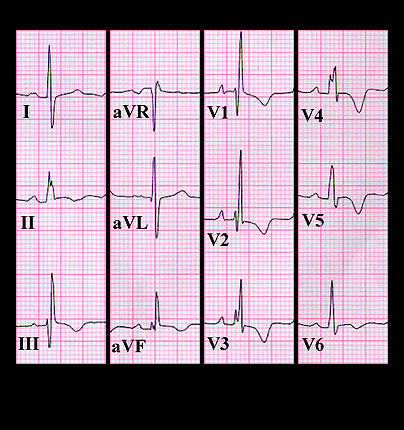
The P waves are normal and precede each QRS complex, indicating sinus rhythm. The PR interval is normal (0.16 seconds) and the QRS duration is minimally prolonged ( 0.11 seconds). The ECG diagnosis is incomplete right bundle branch block. The initial 0.04 second QRS spatial vector in the frontal plane (1) has an axis of +20 degrees. The terminal 0.06 spatial vector (2) is directed to the right and slightly inferiorly with an axis of approximately +170 degrees. The R’ in leads V1 and V2 indicate that it is also directed anteriorly. The vector loop illustrates the features of right bundle branch block with a rapidly inscribed early portion and a more slowly inscribed terminal portion.
